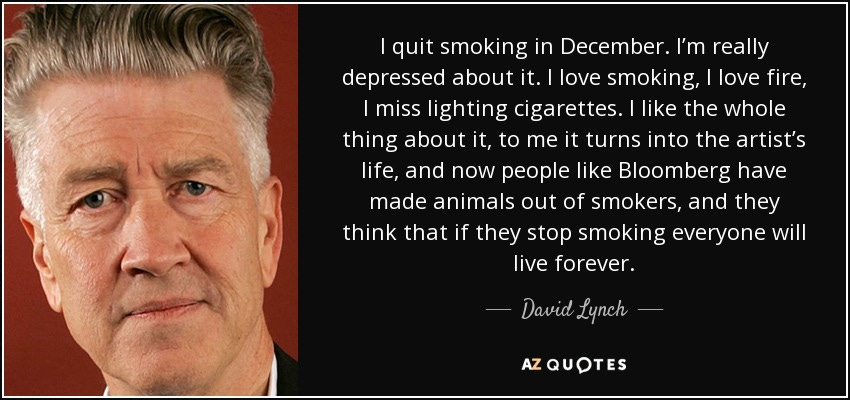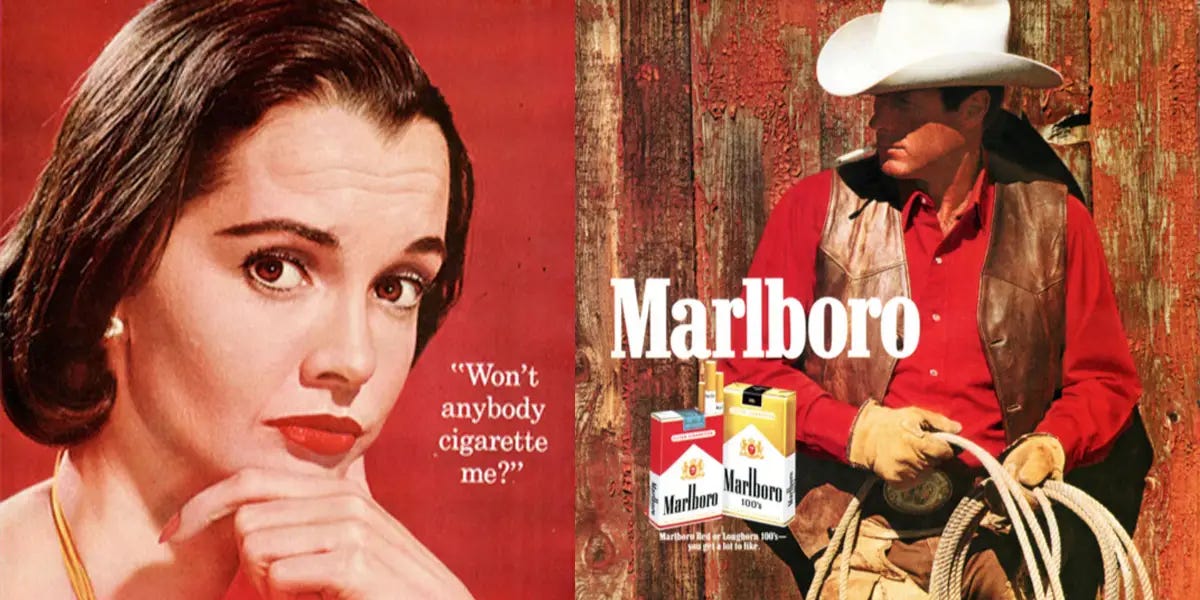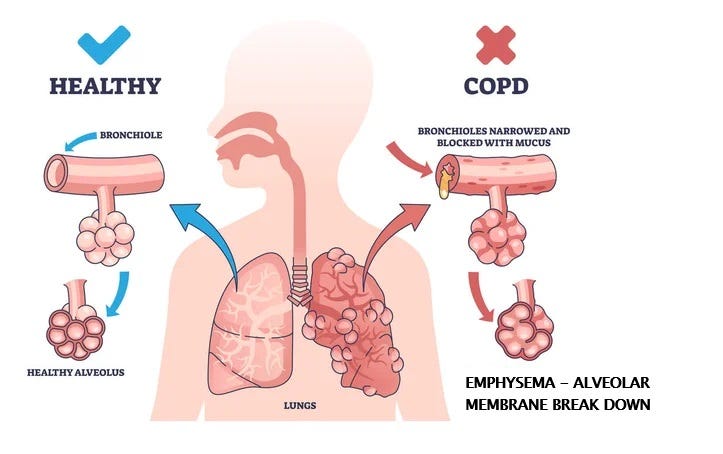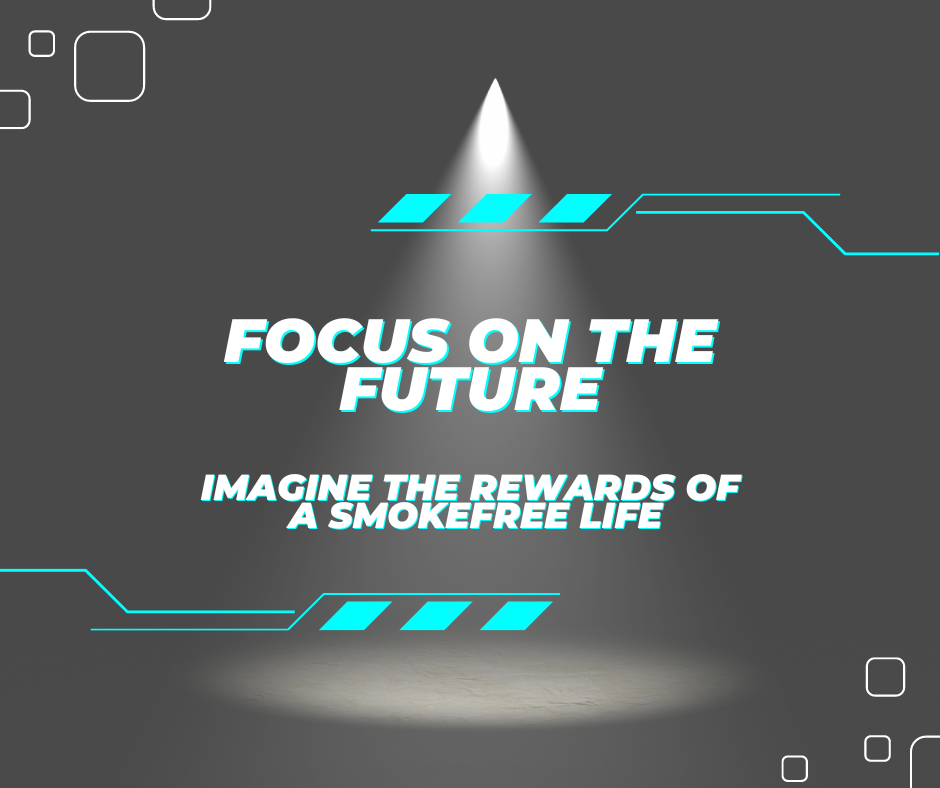
David Lynch Case Study: The Cost of a Lifetime of Smoking
David Lynch Case Study: The Cost of a Lifetime of Smoking
Exposing the Deadly Consequences of Big Tobacco's Continuing Trade
Sue Freeman
Feb 08, 2025

David Lynch January 20, 1946 – January 16, 2025
Who Was David Lynch Before Smoking Took Hold?
Before he became a cinematic legend, David Lynch was a young artist with a passion for storytelling. Born in Missoula, Montana 1946, he grew up in a creative but transient household. By the age of eight, he had already picked up a cigarette—an innocent experiment that turned into a lifelong addiction.
David Lynch, was a prolific filmmaker, known for his distinctive and surreal style. Some of his most recognizable movies, include:
1. Eraserhead (1977) - Lynch's debut feature film, a dark and surreal industrial nightmare.
2. The Elephant Man (1980) - A biographical film about a Victorian surgeon who rescues a heavily disfigured man.
3. Blue Velvet (1986) - A mystery thriller involving a young man's investigation into a nightclub singer and a group of criminals.
4. Twin Peaks (1990-1991, 2017) - A cult TV series about an FBI agent investigating the murder of a small town's homecoming queen.
5. Lost Highway (1997) - A psychological thriller about a musician who is convicted of murder and his mysterious escape.
6. The Straight Story (1999) - A heartwarming film about a retired farmer who travels across the country on a lawn mower to visit his ailing brother.
7. Mulholland Drive (2001) - A surreal film about a woman who suffers from amnesia after a car accident and her journey through Hollywood.
8. Inland Empire (2006) - Lynch's last movie, a surreal film exploring themes of identity and reality.
I want to share a video with you that you may not have seen before. It's a rare clip of David as a young man, capturing himself on film. If David had escaped Big Tobacco's hooks, imagine how different his life would have been.
Big Tobacco's Influence: The Marketing of Addiction
David was a product of an era when smoking was glamorized. In the 1950s and 60s Big Tobacco marketers bombarded the public with images of Hollywood stars exhaling elegant clouds of smoke, reinforcing that cigarettes symbolized creativity, rebellion, and sophistication. It was a time when "men were men, and women were glad of it"—a phrase that epitomized the gendered marketing of Tobacco.

Remembering the Marlboro men-victims of Big Tobacco’s pandemic. Photo on Pinterest.
Big Tobacco, the legal drug pusher, thrived by preying on human vulnerabilities, embedding cigarettes into the cultural fabric. David, like millions of others, fell victim to this marketing machine. The marketing tactics that once ensnared generations into smoking are now being used to target our youth with vaping. The impact of these harmful products continues to be profound and far-reaching.
David Lynch Unleashed
David often spoke of how cigarettes inspired his creativity, but the truth was he never experienced his full potential. His adolescent brain was affected by nicotine, and as a result, he relied on smoking to feel normal. According to neuroscience research, "Adolescence is a critical period for brain development, and nicotine exposure during this time can lead to long-lasting changes in brain function and structure, making it harder to quit smoking later in life." Had he successfully quit, his creativity would have been exponentially increased, as would his energy and vitality. Given that he had the resources to eat well and care for his health, David Lynch's life could have been totally enriched by not smoking. His work might have seen even greater innovation and depth, and his overall well-being would have flourished. The artistic legacy he left behind, though already impressive, could have been even more profound.
When you see someone who is productive or in an older age group and smokes, don't assume that smoking isn't a problem for them and therefore must be okay. That is flawed thinking! Smoking kills 50% of its users if used as the manufacturer intended. In its wake are disability, disease, and premature death. Look behind the smoke screen!
The Reality of Smoker's Lung: A Slow Goodbye

Image of Healthy vs a Smoker’s Lung by vectormine on Deposit Photos
For decades, David made no secret of his love for smoking. He often spoke about the joy of sipping coffee and smoking cigarettes, describing them as essential to his creative process. But behind the cool aesthetic was a slow descent into health consequences (Vulture, 2018).
In 2020, Lynch was diagnosed with emphysema—a devastating lung disease caused by years of smoking (The Guardian, 2024). By 2022, he had finally put out his last cigarette. But the damage was done. His lungs had suffered irreparable harm. In his final years, Lynch could hardly walk due to his body's inability to take in oxygen, tethered to supplemental oxygen just to perform everyday tasks (People, 2024).
A Case Study in Influence: Can His Death Inspire Change?
David Lynch's story isn't just about smoking; it's a tragic narrative of the slow destruction of a brilliant mind and body at the hands of addiction. His passing in 2025, just before his 79th birthday, sent shockwaves through Hollywood, with many fans citing his death as a poignant wake-up call (The Guardian, 2025).
But will that awareness last? History shows that moments of reflection are fleeting unless reinforced by sustained efforts and public figures amplifying the message.
Lynch's tragedy must not become another statistic in the war against Big Tobacco. It's a call to action for all of us to keep the momentum going. If you quit smoking or vaping because of David’s experience, share your story to make a real impact in this fight.
The Path to Healing: Taking Control Over Addiction
If you're considering quitting, now is the time. Let David's story be the turning point.
Dedicated individuals are working tirelessly in research and smoking cessation support, helping people quit smoking and vaping. I am on record as not being a fan of Big Pharma profiting from nicotine addiction. Their revenues reach billions, while smoking-related deaths are counted in the millions. That contrast speaks volumes.
True Healing Through Empowerment
The focus should be on true healing—empowering individuals to reclaim control through education, not just replacing one addiction with another. Understanding how smoking and vaping alter the brain and body is the first step. With health education and lifestyle changes, individuals can make informed, life-changing decisions for better health. By applying this knowledge in small, actionable steps and maintaining a mindset of willingness to change and believe in transformation, true healing is achievable.

We create our future today! Image on Pinterest
The Smokefree System: A Holistic Approach to Quitting Smoking
Quitting smoking requires more than willpower—it demands a comprehensive approach that addresses the body, soul, and spirit. My program, The Smokefree System: Taking Back Control—The Ultimate Guide to Quit Smoking & Not Relapsing, is designed to do just that.
This program is based on nursing theory, neuroscience, and research across multiple fields. It empowers individuals to initiate self-healing by understanding the changes smoking and vaping create in their brains and bodies. By applying this knowledge, individuals can regain control over their health. The program helps develop and nurture a mindset of willingness to change and a belief in their own transformation into an ex-smoker. To be able to say “I love not smoking” and feel the rush and exhilaration of FREEDOM from nicotine addiction.
Currently available on Amazon and Google Play Store, this program will soon be launched as an 8-week gamified experience on Xperiencify. An additional four weeks of support are included to reinforce the necessary changes and prevent relapse. At its core, the program recognizes that humans are created in God's image and must live by His natural laws for health and well-being. Through these principles, the body's inbuilt mechanisms for healing and recovery from nicotine addiction can be activated in a smokefree lifestyle the client is supported to create.
Get Support: Take the First Step
For more information and support, [email protected]. Our new website, QuitStrong.org, is launching soon—stay tuned for more resources and tools to help you quit smoking for good!
References
1.The Guardian. (2025). [David Lynch's Final Years and Smoking's Toll](https://www.btimesonline.com/articles/172760/20250209/david-lynch-s-cause-of-death-revealed-as-cardiac-arrest-linked-to-copd.htm).
2. The Guardian. (2024). [David Lynch Says He Is Too Ill to Direct Films in Person](https://www.dailymail.co.uk/tvshowbiz/article-14374183/david-lynch-cause-death-twin-peaks-dead-78.html).
3. People. (2024). [David Lynch on Quitting Smoking & Emphysema Diagnosis](https://www.msn.com/en-us/entertainment/celebrities/david-lynch-s-cause-of-death-revealed/ar-AA1yF0sL).
4. Vulture. (2018). [David Lynch in Conversation About Smoking & Creativity](https://www.rollingstone.com/tv-movies/tv-movie-news/david-lynch-cause-of-death-1235260596/).
5. https://pure.psu.edu/en/publications/adolescent-brain-maturation-and-smoking-what-we-know-and-where-we